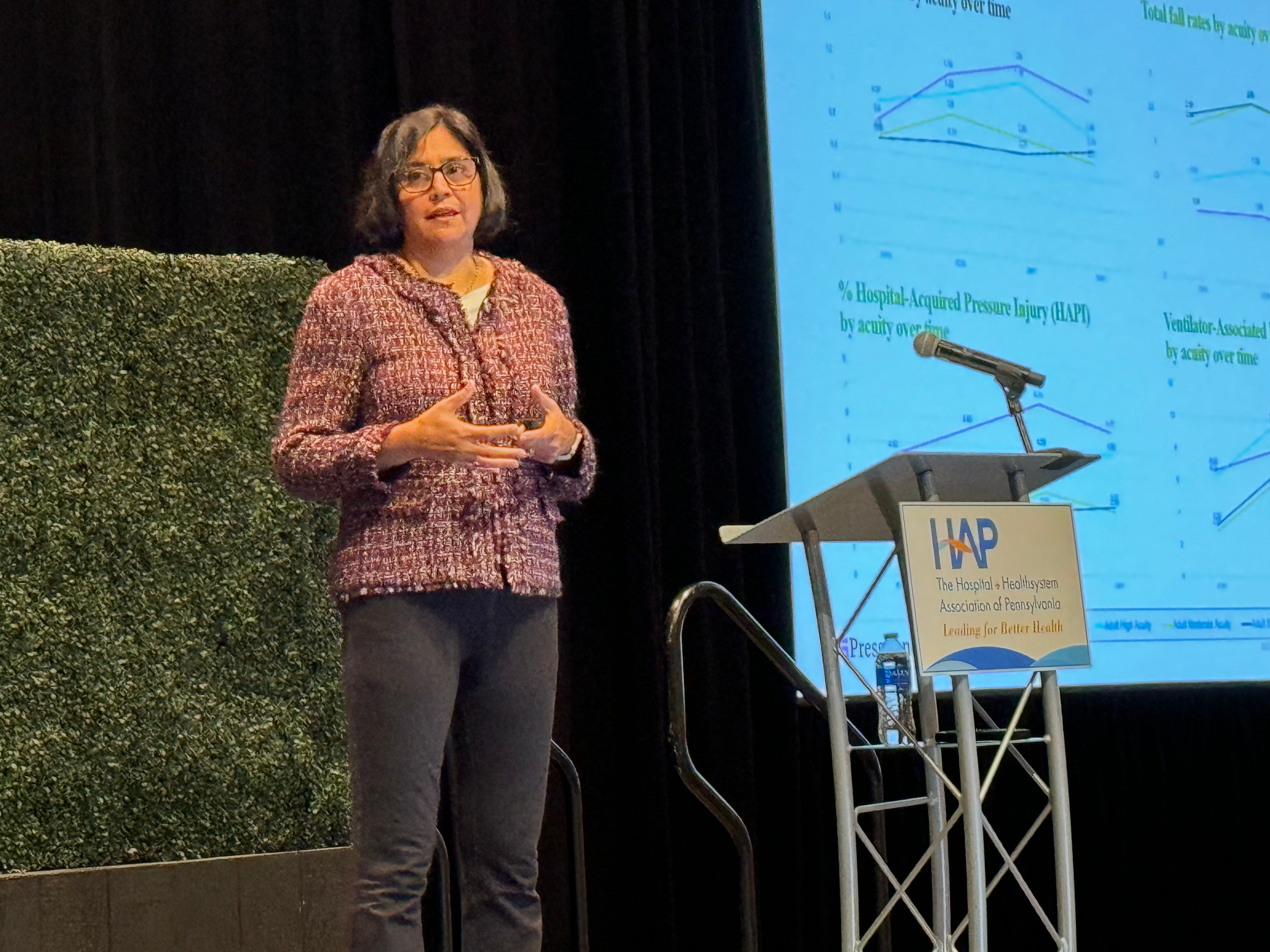If hospitals want to improve patient safety, they must engage their staff
An inclusive organization is more likely to see gains in safety, says Tejal Gandhi of Press Ganey. Hospitals also must make sure their workers feel safe.
Harrisburg - Tejal Gandhi has talked often about the goal of “zero harm,” and even as a proponent, she acknowledged the concept is controversial to some people.
Hospitals need to have an engaged, inclusive workforce to make gains in patient safety, says Tejal Gandhi of Press Ganey.

Gandhi, the chief safety and transformation officer at Press Ganey, said some critics have pushed back on aiming for no harmful events for patients. She noted that some say, “it's not achievable. It may be demoralizing … you shouldn't be talking about it.”
Still, Gandhi said she thinks the goal of zero harm is valid and worthwhile.
“It is aspirational,” Gandhi said. “We may never get there. But by setting that goal of zero, we think differently about what it is we're going to need to do.”
In a presentation at the Hospital + Healthcare Association of Pennsylvania Leadership Summit last week, Gandhi talked about improving the safety of patients and how those efforts are linked to the wellness of the hospital workforce.
She spoke just after Press Ganey released a new report, “Safety in Healthcare 2024,” which examines patient and workforce safety issues. In 2025, 68.5% of hospital patients said they felt “very safe,” a 5.1% drop from pre-pandemic levels, according to the report. Conversely, 81.9% of patients in medical practices and ambulatory settings felt safe, which is higher than pre-pandemic levels.
Hospitals are seeing some gains, including a reduction in catheter-associated urinary tract infections, the report finds. However, about half (48.5%) of workers have a low perception of safety culture, according to the report.
“So even though we’re improving, lots of opportunity,” Gandhi said.
- Read more: Top 10 patient safety threats for 2024: Helping new clinicians, maternal health, AI and more
Engagement and inclusion matter
Gandhi, a member of the National Steering Committee for Patient Safety, talked to Pennsylvania hospital leaders about taking a holistic view of safety.
She stressed that workers have to think about improving patient safety as a core part of the organization, not an initiative that is separate from the rest of the system.
Hospitals and health systems also need to see the engagement of their workers as a vital component of improving patient safety.
“Safety culture is not a thing ‘over here’ and different, or disconnected from engagement,” Gandhi said.
Gandhi also made the case for organizations to focus on inclusion in both engaging workers and as part of patient safety.
“There are tight correlations between your performance on safety culture, your performance on inclusion and belonging, and the performance on overall engagement,” Gandhi said.
Health systems with a greater sense of inclusion are more likely to have employees who feel empowered.
“If you feel like you belong, and your background is valued and matters, you're going to be more likely to speak up around a safety concern and more likely to be engaged in your organization,” Gandhi said.
Gandhi also highlighted the need to incorporate an “equity lens” when examining patient safety. She said it’s impossible to have high quality care if organizations aren’t focused on improving care for all.
When looking at patient safety, organizations should examine outcomes by race, ethnicity and gender, which can yield insights on improving the culture.
Beyond improving safety, there’s also a connection between safety culture, inclusion and belonging in improving the hospital experience for patients.
“The more engaged your workforce, the stronger your performance on patient experience,” Gandhi said.
Plus, patients that feel safer and have a better experience are more likely to recommend the hospital to others, she said.
Workforce safety and patient safety
Hospitals should also consider the safety of their workforce as an imperative to improving patient safety. Health systems need to ensure the physical, psychological, and emotional safety of their staff to ensure a culture of safety, Gandhi said.
Nurses and doctors have decried the rising violence they’ve seen in hospitals.
The number of reported assaults against nurses rose 5% from last year, according to the Press Ganey report. The report states that there are 2.71 assaults per 100 nurses, up from 2.59 the previous year.
Put another way, there are two assaults on nurses every hour, the Press Ganey report stated. Psychiatric units see the most violent incidents, followed by the emergency department, according to the report.
Gandhi raised the possibility that more nurses are coming forward to disclose if they have been assaulted by a patient.
“I cannot tell you how much of this is an increase in assaults and how much is an increase in reports of assaults,” she said.
Hospitals need to recognize that improving the safety culture includes ensuring that workers aren’t subject to violence.
“This broader definition of harm has to include our workforce, as well as our patients,” she said.
Workers who don’t feel safe are more likely to leave, Gandhi said. Other reports have yielded similar findings. The Health Resources and Services Administration released a survey in March finding that registered nurses cited high-risk working conditions as their most common reason for leaving their jobs, with many also citing insufficient safety protocols.
Gandhi said she is encouraged by the “cultural shift” that she is seeing regarding workplace violence, with clinicians and leaders recognizing that violence can’t be simply seen as part of the job.
“We are starting to see a very different conversation about workforce safety,” she said.
Telehealth faces a looming deadline in Washington | Healthy Bottom Line podcast
February 12th 2025Once again, the clock is ticking on waivers for telemedicine and hospital-at-home programs. Kyle Zebley of the American Telemedicine Association talks about the push on Congress and the White House.